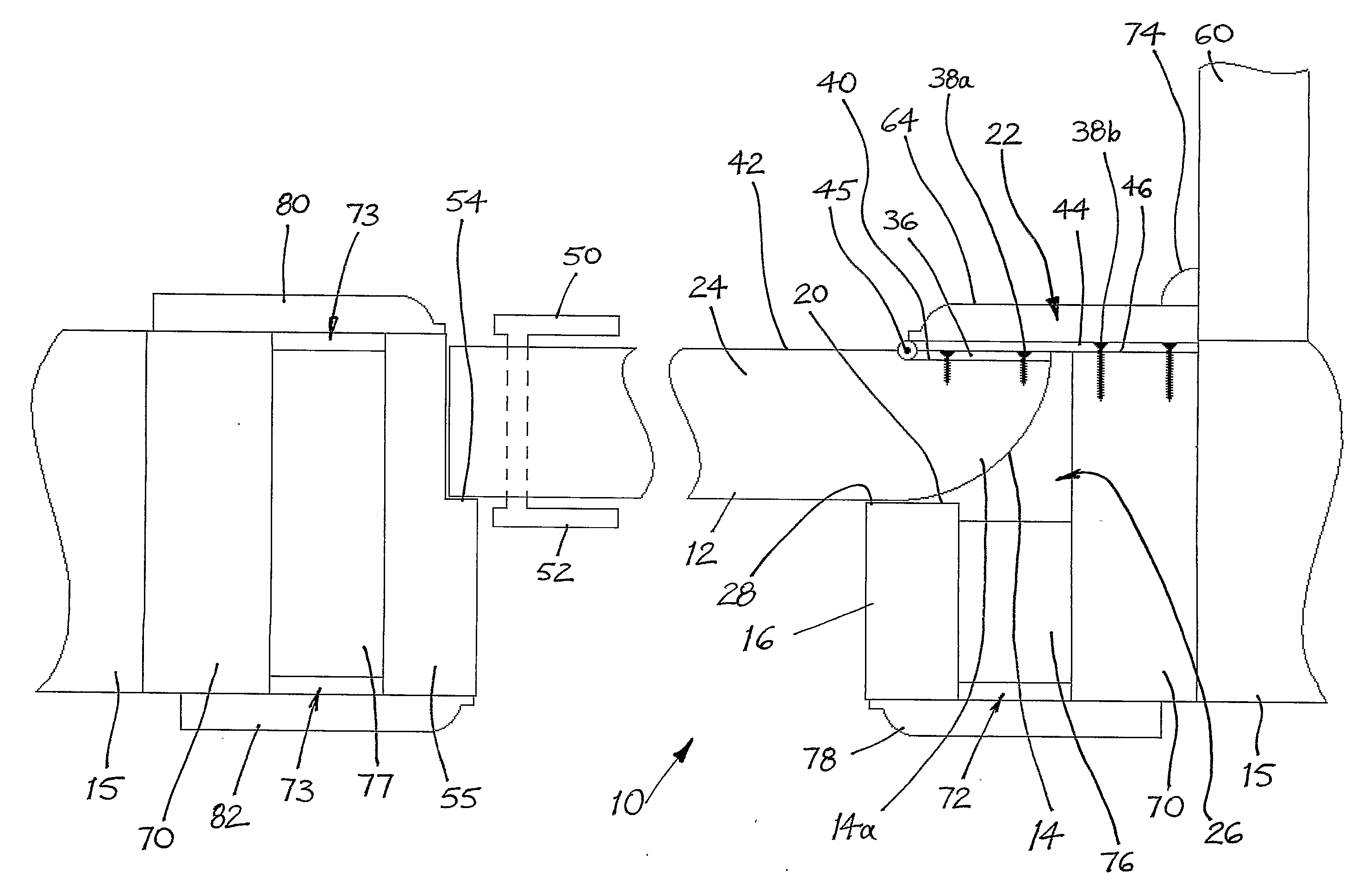Child Safe Door, Frame and Hinge Assembly
a technology for hinges and doors, applied in the direction of hinges, door/window fittings, wing arrangements, etc., can solve the problems of finger injury to the hinge side of the door, many dangers to users and others, and more serious consequences
- Summary
- Abstract
- Description
- Claims
- Application Information
AI Technical Summary
Benefits of technology
Problems solved by technology
Method used
Image
Examples
Embodiment Construction
[0046]With reference now to the above summarized drawings of FIGS. 1 to 8, a door, frame and hinge assembly embodying the principles and concepts of the present invention will now be described.
[0047]The door, frame and hinge assembly 10 shown in FIG. 1 includes a door 12 having a hinge side defined by a convexly curved surface 14, a frame mounted to a wall 15, the frame being formed of a hinge side wall stud 70, vertically spaced apart packing blocks 76, and a hinge side door jamb 16. The hinge side door jamb 16 defines a hinge side doorstop face 20 of sufficient width (or of sufficient distance from the wall stud 70) to allow the door 12 to open without a gap being created between the hinge side of the door 12 and the door jamb 16 that may cause finger-pinch injury. The assembly 10 also includes hinge means 22 connecting the door 12 to the wall stud 70.
[0048]The convexly curved surface 14 defining the hinge side of the door is, in this embodiment, the curved surface of a cylindrica...
PUM
 Login to View More
Login to View More Abstract
Description
Claims
Application Information
 Login to View More
Login to View More - R&D
- Intellectual Property
- Life Sciences
- Materials
- Tech Scout
- Unparalleled Data Quality
- Higher Quality Content
- 60% Fewer Hallucinations
Browse by: Latest US Patents, China's latest patents, Technical Efficacy Thesaurus, Application Domain, Technology Topic, Popular Technical Reports.
© 2025 PatSnap. All rights reserved.Legal|Privacy policy|Modern Slavery Act Transparency Statement|Sitemap|About US| Contact US: help@patsnap.com



